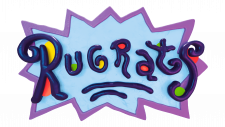The Times Logo
“The Times” is a renowned British daily newspaper known for its in-depth news coverage, insightful editorials, and commitment to journalistic integrity. Established in 1785, it stands as one of the world’s oldest and most respected newspapers. The Times is celebrated for its thorough reporting on international and domestic affairs, culture, and business, often shaping public opinion and policy. With a rich history, it has evolved to embrace digital journalism while maintaining its traditional quality and reliability, making it a trusted source for readers globally.
Meaning and history
Founded in 1785 by John Walter as “The Daily Universal Register,” and renamed “The Times” in 1788, this newspaper has been a cornerstone of British journalism. The Times was at the forefront of innovation, introducing serialized storytelling in the 19th century. Under the stewardship of John Thadeus Delane (1841-1877), it emerged as a pivotal influencer in shaping societal views and policies.
The Times was a pioneer not just in content but also in technology, being the first to adopt steam-powered printing in 1814, which revolutionized newspaper circulation. Its commitment to on-ground reporting was exemplified by its coverage of the Crimean War through correspondent William Howard Russell, profoundly impacting military policies.
Ownership transitions in the 20th century saw it under the control of Lord Northcliffe and later the Astor family, during which it upheld a conservative perspective. Its editorial stance during World War II, particularly its support for Churchill’s strategies, was notable. The post-war era saw an expansion in its global reporting scope.
A significant shift occurred in 1981 when Rupert Murdoch’s News International acquired The Times, bringing in a phase of modernization and editorial redirection. Despite facing challenges, the paper maintained its standard for high-quality journalism.
Adapting to the digital revolution, The Times launched an online presence in 1995 and introduced a pioneering paywall in 2010, reinforcing its position in the digital news arena. Today, it stands as a bastion of comprehensive news, insightful analyses, and unwavering commitment to journalistic excellence, continuing to influence both British and international discourse.
What is The Times?
“The Times” is a prominent British daily newspaper, lauded for its comprehensive coverage of international and local news, in-depth analysis, and opinion pieces. Established in 1785, it has consistently played a pivotal role in shaping public discourse, blending traditional journalistic values with modern digital reporting.
1785 – 1789
The emblem features a baroque coat of arms, flanked by a regal lion and a mythical unicorn, symbolizing strength and purity. The shield at the center is quartered, indicating a rich heritage, and topped with a royal crown, hinting at authority. Above and below the crest, ornate scrolls bear the publication’s name, “The Universal Daily Register,” rendered in a classical script that evokes the elegance of 18th-century typography. The overall design encapsulates the grandeur and formality characteristic of the period, projecting an image of time-honored tradition and institutional significance.
1789 – 1797
This logo portrays “The Times” in a bold, serif font, asserting its identity above “OR, DAILY UNIVERSAL REGISTER,” which arcs below in a distinctive banner. The central emblem, a globe encircled by a garter bearing the inscription “Honi soit qui mal y pense,” suggests global reach and a touch of royal association. The globe, anchored in a sea of intricate foliage, is a nod to the paper’s comprehensive coverage. Flanking the globe are classical symbols of heraldry, implying a legacy of trust and authority. This design marks an evolution from its predecessor by emphasizing “The Times” more prominently, signaling a shift in brand identity towards the now-famous title, while retaining the ornate grandeur befitting its 18th-century origins.
1797 – 1959
This iteration of “The Times” logo features a more streamlined design, where the name is boldly divided with an ornate, heraldic crest centrally placed. On each side of the crest, a lion and a unicorn, symbols of the United Kingdom, stand as guardians. The crest itself is a shield topped with a crown, further emphasizing a connection to British identity. The mottoes “Dieu et mon droit” and “Honi soit qui mal y pense” flank the shield, reinforcing the air of nobility. Compared to the previous version, this logo simplifies the design by reducing ornamental complexity and giving the title more prominence, showcasing an evolutionary step towards modernity while retaining its regal roots.
1959 – Today
The logo displays “THE TIMES” in bold, sans-serif lettering, signifying a modernized approach. Centrally, a detailed crest flanked by a lion and unicorn remains, embodying tradition and heraldry. This crest, smaller in scale compared to its predecessor, allows the newspaper’s title to command greater attention, reflecting a shift towards a more contemporary, cleaner aesthetic. The mottoes “Dieu et mon droit” and “Honi soit qui mal y pense” are subtly integrated within the crest, maintaining the historical connection. This design evolution from the previous logo simplifies the visual elements, focusing on the name’s impact, signifying the brand’s evolution while respecting its storied past.















